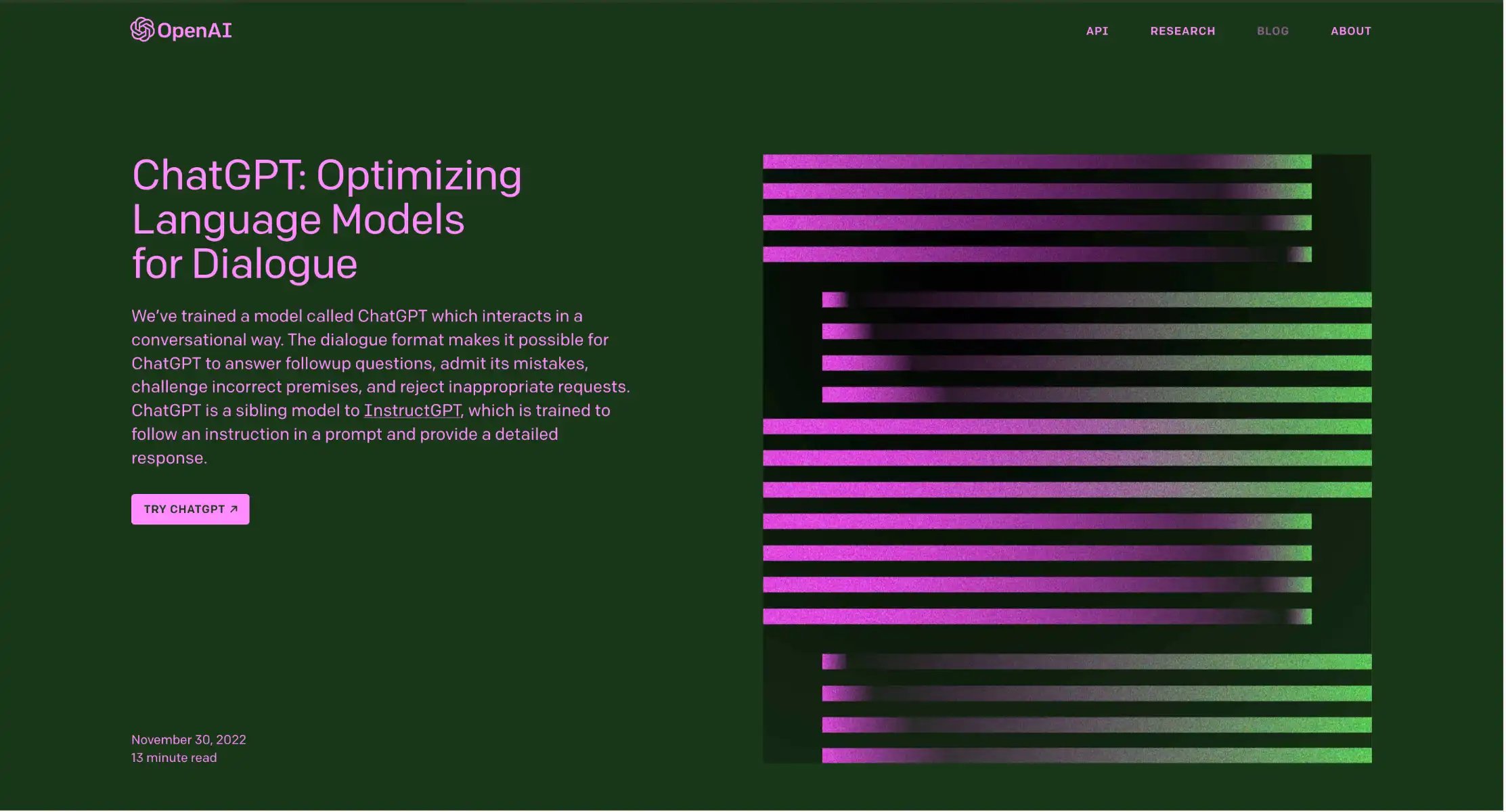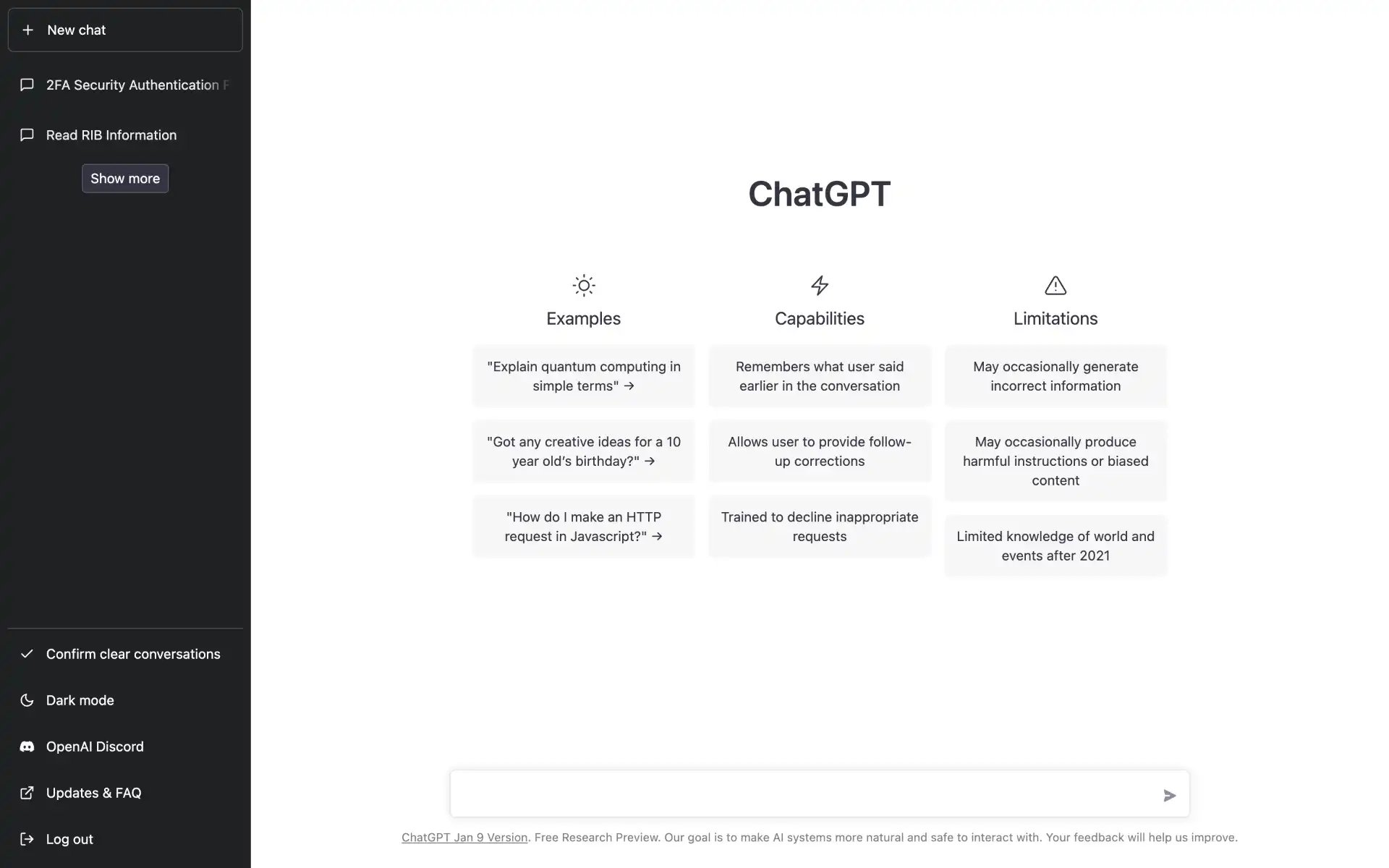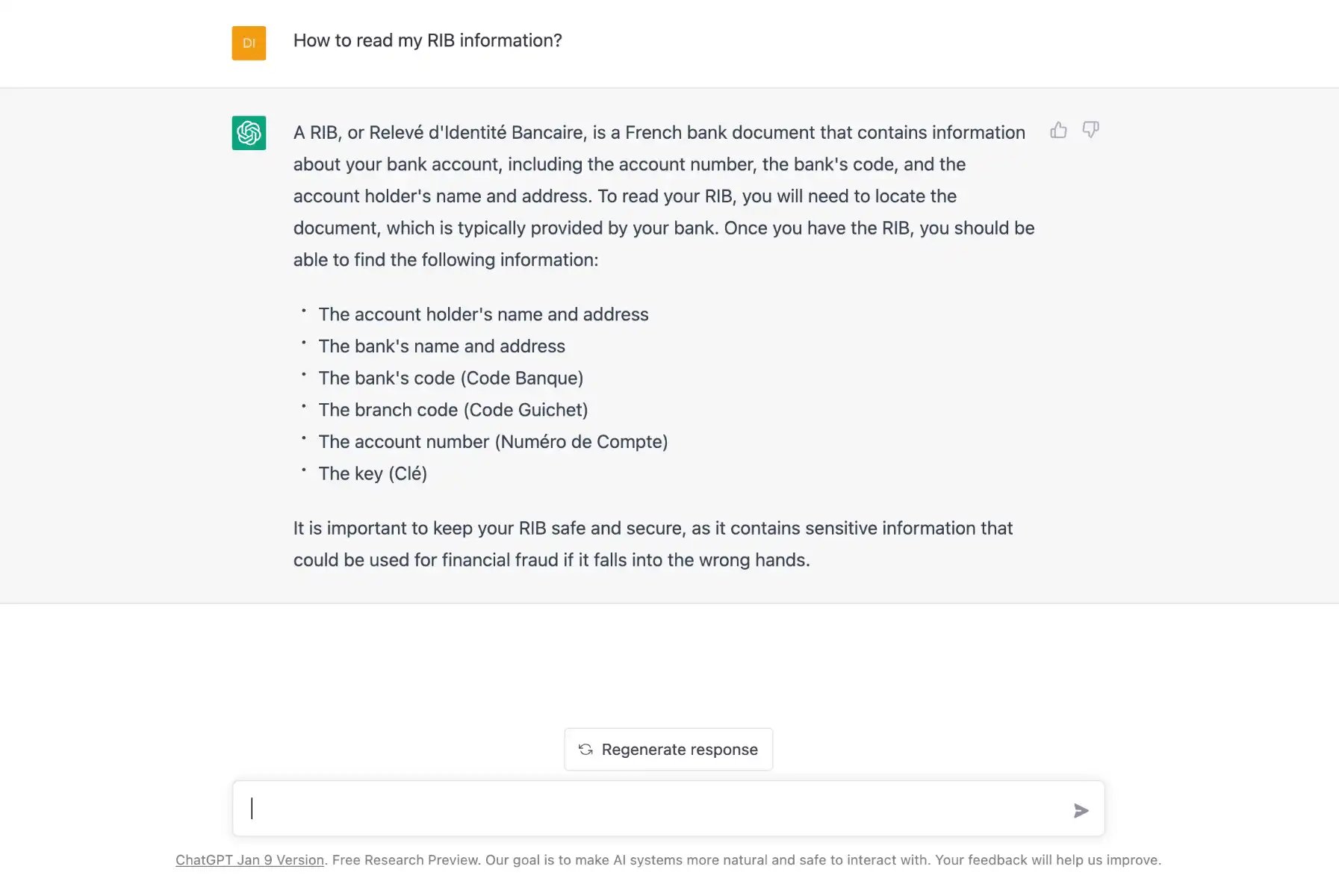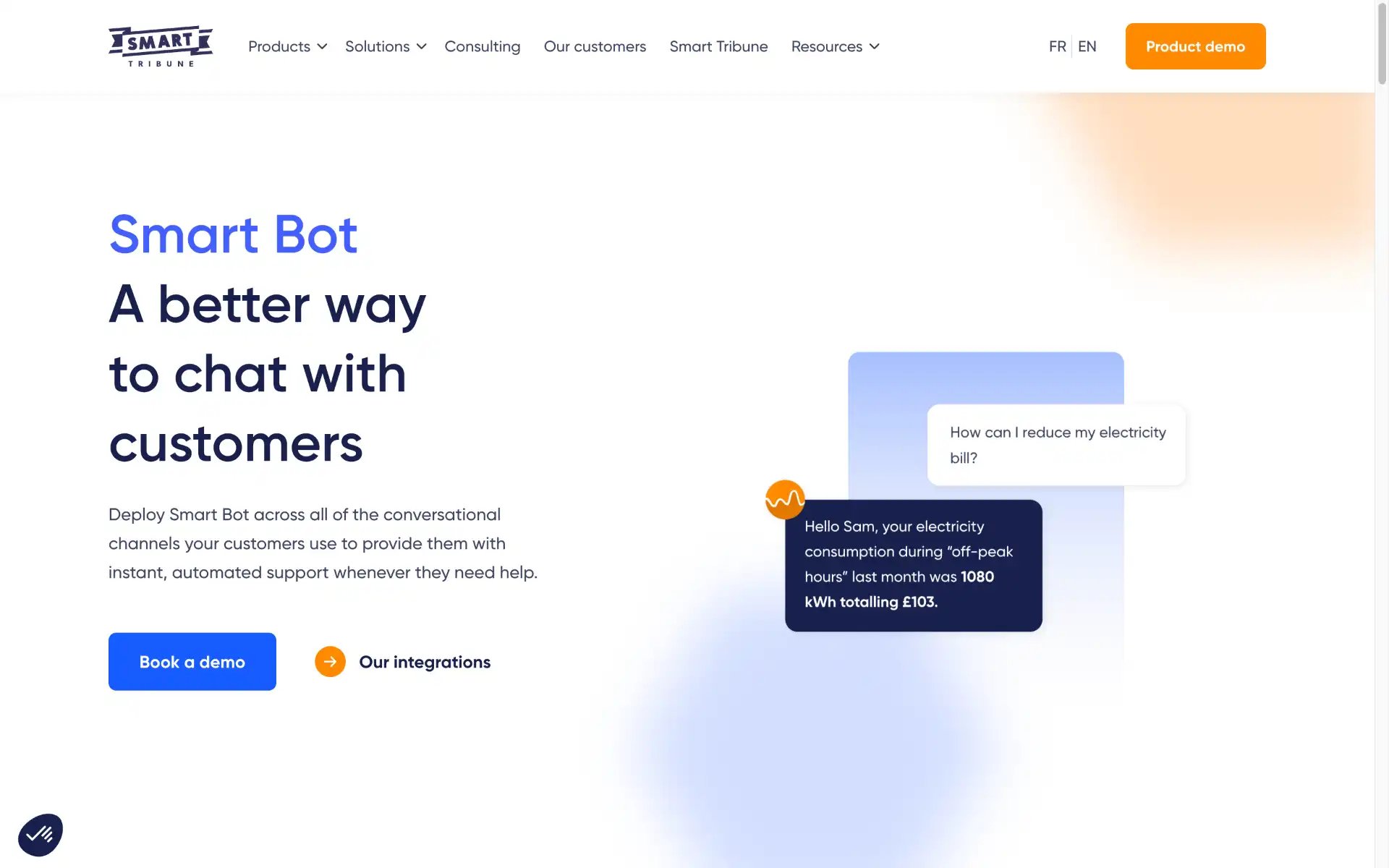
On JANUARY 23, 2023
Exploring ChatGPT: The AI Transforming Content Strategy And Info Discovery
ChatGPT has been a widespread phenomenon for a couple of weeks. It is predicted to be an innovation that will shape the technological future in light of its astonishing capability to interact with users. It has never been easier for humans to communicate with an AI-powered chat so conversationally.
Whether you have tried this revolutionary technology or not yet, let's discover the reasons why ChatGPT goes viral so quickly and unexpectedly.
In this article, we will help you zoom in:
- Comprehensive ChatGPT definition;
- ChatGPT usage guide;
- Proven strengths and weaknesses of ChatGPT;
- ChatGPT pricing;
- Comparison ChatGPT vs. Smart Bot
- Frequently asked questions about ChatGPT.
If you feel pumped already, let's get the show on the road.

What is ChatGPT?
ChatGPT is an artificial intelligence chatbot prototype capable of understanding natural human language and generating textual dialogue at an unparalleled level of detail. It is a chatbot powered by GPT-3 technology, a natural language processing-based AI trained with 175 billion parameters.
ChatGPT is the latest implementation of the GPT (Generative Pre-Trained Transformer) family, the generative artificial intelligence of text created by the Californian company OpenAI.
After augmenting its best GPT-3 language model with capabilities to understand natural language instructions and guidelines (resulting in a less publicized intermediate model called InstructGPT, released in January 2022) OpenAI has, again, added an extra layer of specialisation to its AI to teach it the codes of human-to-human conversation, and gave it a user-friendly interface to make it accessible to everyone.
 So, what does GPT stand for?
So, what does GPT stand for?
- “G” for “Generative”: the machine learning model that will generate content such as text or images.
- “P” for “Pre-Trained”: the model will learn to solve similar problems or give answers based on the datasets that have been developed.
- “T” for “Transformers”: this is the name of the deep neural architecture (Deep Learning) proposed by Google in 2017 and which has revolutionized the field of Natural Language Processing (NLP). This complex architecture has allowed a strong improvement in the modeling of the language, by offering a better consideration of the interactions between words and their context.
ChatGPT Pricing - Is ChatGPT Free?
As of now, ChatGPT is totally free and is only accessible on a web browser such as Chrome, Safari, Firefox or other Chrome alternatives (on desktop or on mobile).
However, the AI tool's popularity is growing so fast that Sam Altman - OpenAI's chief, said on Twitter, admitted he will need to monetise it eventually because of its "eye-watering" compute costs. Currently, “the average cost of each response was in "single-digits cents".
The current version is not connected to the internet. Its answers come only from the latest version of its data, this model having been trained with a history that stops in June 2021. The AI is, therefore, not able to provide data or take into account information after this date.
How to Use ChatGPT?
The first thing you need to do is create an account on the dedicated Open AI page by filling in:
- your email address and validating it
- your first and last name
- your mobile number
A code will be sent to you to finalize your registration. You will then need to indicate for what purposes you want to use the Open AI tools. For personal use, click on “I'm exploring personal use”. 
To use ChatGPT, visit the site from a web browser. The user interface looks like a simple instant messaging window where you chat with your friends on the web.

By asking ChatGPT a question or by submitting a request, the AI will instantly generate a response.
This chatbot prototype is able to hold a conversation with a human in an amazing way and trains as the conversations progress. Apparently, thousands of users who have used the system in recent days have already put the prototype to the test and have therefore strongly trained it in passing.
ChatGPT Application in Real Life: Pros and Cons
Today, ChatGPT is able to provide descriptions, answers and solutions to complex queries. The possible applications for this AI are therefore numerous. In customer relations, this type of model can, for example, provide valuable assistance in writing and improve the interactions of chatbots by making them even more “human” in the way they converse.
To uncover everything about the chatbot, drop by:
- What is A Chatbot?
- All About Chatbot Use Cases That You Need to Know In 2023
- 7 Ways Chatbots For Sales Can Help Your Business
- Top 9 Practices of Lead Generation Chatbot That Hit The Mark
- 7 Steps To Find A Good Bot Name & 200+ Industry-Based And Catchy Chatbot Name Ideas
Advantages of ChatGPT
ChatGPT is universally believed to change the way people communicate with computers. With that vision, it has a lot to bring to the table. Keep scrolling down for more about ChatGPT's enormous benefits.
Help with text generation
In customer relations, writing the content of dynamic FAQs or chatbot scenarios is a real job that requires taking into account a certain number of parameters: information, SEO, clarity of the explanation, and formatting of the answers... With all its knowledge, the AI of GPT-3 can save time in content writing.
For example, let's ask ChatGPT to generate an answer for the question "How to read my RIB information?" A formatted and optimised response is provided instantly. A real time saver! 
Help to find information
How to explain a concept in a simple and understandable way? Sometimes this task can be complex and time-consuming. Thanks to the knowledge acquired by the ChatGTP AI, an answer can be automatically generated, and ready to be published.
For example, to the question “What is two-factor authentication?”, ChatGPT provides a clear and complete answer.

Translation assistance
Translating content can be a time-consuming and perilous exercise in customer relations. Do we need a translator? How quickly can the content be translated? Asking ChatGPT to translate content by formatting could save considerable time! 
Limitations of ChatGPT
It's undeniable, the performance of ChatGPT is impressive!
But at present, the prototype remains limited and perfectible. Moreover, it is presented as a study version by the CEO of Open AI himself.

Let’s take a closer look at the various severe limitations of ChatGPT!
Rights and plagiarism
At the first observation, the problem of rights and plagiarism of content persists again and again.
With the incalculable number of contents analyzed and integrated by ChatGPT (and by DALL-E for images) coming from thousands of sources on the Internet, we also find ourselves faced with a problem of copyright of the sources used.
Also, depending on the level of AI rephrasing, ChatGPT may respond with plagiarized content, which can cause problems when reusing responses (as part of a student assignment for example, or when writing an article).
Incorrect or nonsensical answers
ChatGPT sometimes writes incorrect or nonsensical answers. These are AI hallucinations. Let's take the example of a high school student, for whom ChatGPT can be an endless source of easily-written assignments. Writing the assignment in seconds by Ai may lead to lack of judgment and arguments using potentially false reasoning.
Another example with a request concerning a sequence of numbers. Although ChatGPT has read contents resembling additions and is able to "copy" these reasonings, this prototype can give completely false results. In this case, 88 will never equal 4*3 + 1…

In the same way, during requests, with a very large volume of texts generated at one time, ChatGPT AI can also lose the thread of the context and go on to something completely fantastic. OpenAI should be precisely working on the question to reduce the rate of hallucinations of the robot.
Lastly, ChatGPT may also be cautious and not provide an answer. On the other hand, he may also claim that he does not know the answer to a question, but answers it correctly after a slight change in wording.
Interpretation of requests
In addition, when the request may seem ambiguous, ChatGPT will tend to interpret and guess and not ask the interlocutor for details, which may cause misunderstandings or give false answers.
Over-optimization and river responses
Another problem is that the robot will tend to be excessively verbose and provide long or even too-long answers, for the sake of understanding. This is because human evaluators, who intervened during its development, tended to prefer long and substantiated answers. However, Over-optimization responses are hard to follow, and can sometimes be misleading and nonsensical.
Lack of up-to-date knowledge
We said it earlier, but its current knowledge base stops in June 2021. Its answers, therefore, do not take into account facts after that date. Its content may therefore be false and obsolete.
Fake news and disinformation
ChatGPT is still far from being able to replace a human in the writing of journalistic content. Indeed, AI does not have the level of nuance, critical thinking, and ethics required.

Also, the robot can present pieces of disinformation as facts. It does not know how to deduce facts (like logical chains) and its behavior is therefore comparable to that of a parrot repeating what it has heard. The Moderation API is used to block certain types of content, but false negatives and false positives remain. OpenAI is counting on user feedback to fix this problem.
Dangerous instructions or behavior
Finally, despite OpenAI's efforts to make the model deny inappropriate requests, the filter is not foolproof. ChatGPT can sometimes react to dangerous instructions or exhibit biased behaviors.
AI technology has been around for a while and OpenAI (and its competitors…) are working on improving to develop and control all its power. While today's ChatGPT chatbot prototype highlights the current limitations of the language modeling machine learning model, it still foretells many improvements to come in the near future. Through AI training, good prospects for customer relationship development are predictable.
Differences Between ChatGPT vs Smart Bot?
It’s been a long way and one of the most controversial questions still remains unanswered, which is “What are the differences between ChatGPT and Smart Bot?”
Smart Bot is a cutting-edge AI-powered custom chatbot for businesses or organizations, designed and developed by Smart Tribune - an award-winning provider of customer self-service. Smart Bot helps your visitors rapidly access to company’s common knowledge or product details by giving answers based on the pre-built script or flow. 
By fully controlling the input of your chatbot, you can ensure the utmost accuracy of each reply that the chatbot gives to your customers. Smart Bot directly delivers all of the in-house data, internal knowledge or inventory status to visitors once they type in the chat dialogue.
Meanwhile, ChatGPT is serving as a chatbot that generates answers to users’ questions with data floating on the internet. That’s why, occasionally, ChatGPT provides wrong answers.
Furthermore, generating replies may bring about misunderstanding. Some answers may seem to be right at the first glance, however, one falsely generated word may entirely change the meaning.
So, it is clear that Smart Bot is a go-for option when it comes to customer self-service in terms of precision, relevance and synchronization of in-house data with chatbot normal operation.
FAQs about ChatGPT
1. Is ChatGPT accurate?
ChatGPT can be accurate with simple questions or queries that require little input data. This is because ChatGPT cannot 100% understand the complexity of human language and context.
It is simply trained to generate answers based on a given input, but it hasn't had the ability to truly comprehend the meaning behind those words. Therefore, any responses it generates might be shallow and lacking insights, or even worse - disinformation.
2. How does ChatGPT work?
Simply write to the ChatGPT AI via an online web interface, by asking the robot a question or by submitting a request, the AI will instantly generate a response, based on the source data it has been trained to analyze. The data or the historical knowledge of ChatGPT stops since June 2021.
3. Who built ChatGPT?
ChatGPT is built by OpenAI, a "capped profit" (since 2019) Artificial Intelligence Company based in San Francisco. Its goal is to promote and “develop an artificial intelligence with a human face that would benefit all of humanity”.
4. What is the difference between ChatGPT and a search engine?
ChatGPT is an AI-language generation prototype created with the purpose of keeping up a conversation with the end user. A search engine indexes web pages on the internet to help users find the information they asked for. ChatGPT is not built to search on the internet for information. Instead, ChatGPT uses the information it learned from data training to generate a conversational response.
Final Thoughts on ChatGPT
Had more than one million users in its first five days after launching, ChatGPT is certainly a big splash! As said by Elon Musk, one of the founders of OpenAI before leaving: "ChatGPT is scary good. We are not far from dangerously strong AI".
ChatGPT certainly has the potential to help billions of people with their daily tasks, though it’s still a prototype, and needs lots of improvements. The first important update should be the data freshness. Then, the real challenge will be not to let the AI robot get lost in non-acceptable data sources.

.png)



